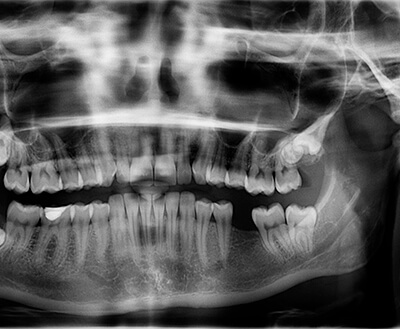 Lots of people have missing teeth – some are born without permanent teeth, while others may have had an accident or experienced a dental issue that resulted in tooth loss. There are more side effects than the embarrassment caused by the unsightly gap left by a missing tooth. Studies have shown that missing teeth can even be linked to depression and poor job performance.
Lots of people have missing teeth – some are born without permanent teeth, while others may have had an accident or experienced a dental issue that resulted in tooth loss. There are more side effects than the embarrassment caused by the unsightly gap left by a missing tooth. Studies have shown that missing teeth can even be linked to depression and poor job performance.
Most patients notice difficulty when chewing and eating because of missing teeth. Many healthy foods – apples, carrots, even whole grains and cereals – can make it painful to chew where teeth are missing. The result is that many people either skip these healthy options or to start chewing in a different part of their mouths. Changing your chewing pattern can increase the wear on teeth that might not otherwise be exposed to regular use, and can increase damage in those areas.
The empty space left by a missing tooth can also cause your other teeth to shift or move. We call the result “malocclusion”, a term that means that your teeth aren’t meeting properly and don’t work together the way they are supposed to. Malocclusion can cause pain, headaches, and increase the chances that other teeth will be damaged. Bite misalignment can also make it difficult to sleep or eat, and can cause unnecessary loss of other teeth.
Missing and moving teeth can also contribute to changes in your speech patterns, increasing the likelihood that you or your child might develop a speech impediment. Without teeth to help create sounds, your tongue cannot form words properly, and you may develop a lisp or have difficulty enunciating. When a gap that makes you feel self conscious when you smile is compounded by poor speech, you may find that your self-confidence erodes as well.
Missing teeth also increase your chances for bone loss. Facial muscles atrophy where the tooth is missing, causing those tissues to decrease and weaken, and contributing to bone loss. Bone loss causes your facial structure to collapse and change, and can make it difficult to use dentures or implants when you try to replace the missing tooth. Bone loss can also make your face look older as the skin and muscles shrink in around missing teeth.
Fortunately you can replace missing teeth in a variety of ways and put an end to symptoms like bone loss and shift, restoring your smile and chewing alignment. If you have a missing tooth or a tooth has become loose after an injury or other health issue, visit your dentist as soon as possible to assess the condition. Your dentist may want to take x-rays to determine the extent of the damage.
Once your dentist has identified the nature of the problem, you can choose the best solution to replace you missing tooth. Your dentist might suggest a bridge, dentures, or a dental implant. In many cases, your dentist can replace the tooth with a dental implant which acts exactly like a normal tooth and prevents the symptoms normally associated with tooth loss. When a dental implant is not possible, you may consider a bridge, which uses existing teeth as a support for a false tooth. Bridges may need to be replaced over time.
It is not always possible to prevent tooth loss, but regular dental care can help to prevent missing teeth. Regular checkups and good brushing habits help you and your dentist to discover problems before tooth loss occurs, and allow your dentist to provide the best option when tooth loss is unavoidable. If you have a loose or missing tooth, contact us at Greene Comprehensive Family Dentistry in Ruckersville today and we will be happy to help!



